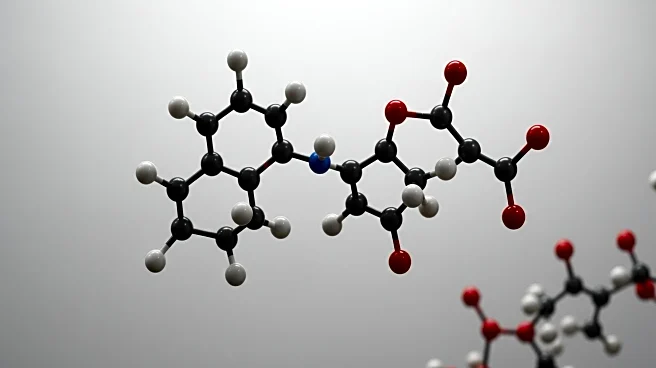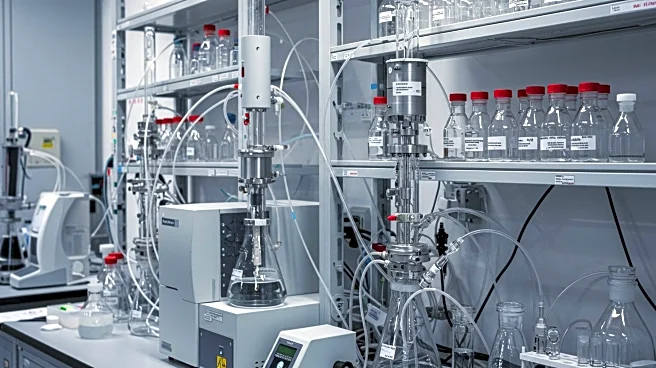What's Happening?
Recent advancements in polymer science have led to the development of levoglucosenone-containing polymers linked with 1,4-butanedithiol, which are being explored for their application as organogels. Levoglucosenone, a biomass compound derived from cellulose, is used as a feedstock for creating these polymers. The study highlights the stereoselective formation of tricomponent polymers, including levoglucosenone fragments, dicarboxylic dihydrazides, and aromatic dithiol. The research focuses on synthesizing analogs using aliphatic dithiol instead of aromatic dithiol, resulting in polymers with negative optical rotations. These polymers exhibit varying degrees of swelling, influenced by the carbon number of the dicarboxylic dihydrazide, and form organogels with DMF. The elongation of aliphatic carbon chains promotes intermolecular entanglement, suggesting that these polymers behave as network polymers despite their linear chains.
Why It's Important?
The development of levoglucosenone-based polymers represents a significant step towards sustainable materials, potentially reducing reliance on fossil fuel-derived plastics. These polymers offer promising applications in drug delivery systems due to their ability to form organogels, which can encapsulate and release active compounds. The research contributes to the growing field of biomass polymers, which are crucial for addressing environmental concerns associated with traditional plastics. Industries focused on sustainable materials and pharmaceuticals stand to benefit from these advancements, as they offer new avenues for product development and environmental impact reduction.











